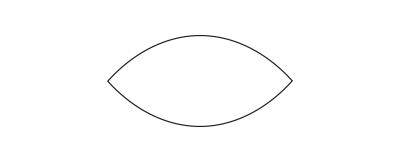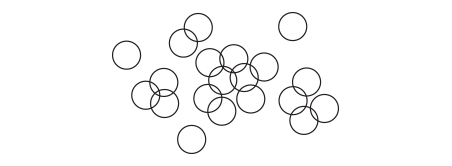Resources

The Mandorla and the Discipline of Authentic Movement
Authentic Movement, compassionate witnessing of moving becoming conscious, is a process grounded in the relationship between a mover and a witness. Different teachers of Authentic Movement offer their evolving perspectives in unique and diverse ways. The Discipline of Authentic Movement, a mystical practice centered in the development of embodied witness consciousness, is one way in this growing field of exploration.
The inseparable root systems of the discipline are mystical practices, healing traditions, and dance. Portal to healing wounds of the heart, portal to direct experience of the numinous, the moving body invites an awakening — summoning the human soul toward a return, a reunion with the eternal.
An embodied mystical practice, which invites the possibility of transformation into new ways of knowing, must include the light and shadow of personality to become integrated into a contemporary life. In the early years of the developmental process of an individual’s inner journey toward such wholeness, psychological and energetic phenomena experienced in the body are distinguished from one another. With continued practice and study the personal realms and the transpersonal realms are not experienced as separate.
In the discipline, in an empty studio, in the presence of an outer witness, an individual beginning as a mover, discovers, journeys through hidden recesses in personal time, personal space, becoming a more conscious witness of herself and then of others. In this untidy, uneven, unpredictable process, an embodied relationship, particularly with imaginative and associative phenomena, moves toward direct experience of energetic phenomena integrating, becoming intuitive knowing.

The Discipline of Authentic Movement, the process itself, remarkably finds home within an ancient shape called a mandorla. The essence of this iconic shape further illuminates the studio practice of mover and witness. Created by two separate circles or mandalas joining by overlapping each other, the shape of an almond or an eye, of a yoni, a flame, or a bud becomes apparent in the center.
The mandorla, often described as a coming together of heaven and earth, of the divine and human, appears throughout the world in the history of art, architecture, religion, and is remarkably evident in the imagery of various mystical traditions. It appears, for example, in the Kabbalah, in the early Egyptian drawings of sacred geometry, in Buddhist texts, and in Christian symbology.
Early Christians used the mandorla to make themselves known to each other by one person etching a small circle in a wall and another person, perhaps encountering the drawing at a later time, etching another circle slightly overlapping the first, thus creating connection.
In the discipline, the mover longs to be seen in her* true nature, to be known by the outer witness. The outer witness longs to see another clearly. From this place of essential human desire for intimate, loving connection, the mover’s circle of being overlaps with the outer witness’ circle of being as they commit to practicing the discipline together.

The mandorla, its emptiness mirroring the emptiness of the studio space, can simultaneously represent the relationship between the mover and the outer witness and the mover and her inner witness. Within both dynamics, the energy represented in the drawing above by the empty space between an upper arc and a lower arc can create a tension between the two arcs. This tension can be experienced in the studio work as a boundaried energy field.
In this field of awareness one may feel a quickening, called, compelled to remain in the empty space represented by the two curved arcs, not knowing. Both the mover and the witness may choose to surrender toward being in the empty studio space in the presence of each other. At the same time the mover may choose to enter more fully her inner world. Such allowing, relinquishing into that which is mysterious, must be met by each with true will, a conscious intention to stay present enough.
Vital forces especially within the interiority of the mover are reflected in drawings, carvings, and sand paintings of the mandorla. In some traditions, the shape invites an awareness, a memory of the feminine aspect of life as a sacred womb, the concealed, hollow place in which spirit incarnates. Some describe this liminal space as an enclosure that emanates light from within.
In this way of studying the mandorla as a visual representation of the Discipline of Authentic Movement, it is as though a ritual space is carved by the outer edges of the shape, evocative of the longing toward clear seeing. In the studio, the outer witness sits to the side of the space with eyes open. Eye contact between mover and witness before the mover closes her eyes and enters movement and again in the hazy space of opening her eyes as she returns, each time marks a beginning and an ending to the ritual, marks an honoring, a gratitude for the presence of each other.

In the drawing above, the emptiness within the mandorla is filled with a representation of embodied consciousness: gestures, words that echo the practice of the Discipline of Authentic Movement as it exists in the studio space as a developmental but non-linear process.
Looking into the mandorla is one way of perceiving the wholeness of a journey of the development of embodied witness consciousness. Yet a visual portrayal of a process can separate phenomenon within it that is not always experienced as separate. A drawing can make concrete or unmoving that which has beauty and integrity or it can elevate it into the fluid force that it can be known to be.
On the far left of the drawing above, where the two arching lines of the mandorla intersect, the number 2 represents duality, the beginning of a shared journey between two distinctly separate beings, a mover and a witness, each filled with their own utterly precious and infinite detail of a self. The outer witness who has had her timeless turn in the immersion of her own journey as a mover, welcomes the new mover arriving. On the far right, the number 1 represents grace, unity consciousness within the mover, within the witness, and within their relationship. MoverWitness.
The upper red arc in the above drawing of the mandorla marks the path of the mover. The green arc just below the red one reflects the path of her developing inner witness. And the lower blue arc designates the path of the outer witness.
As can be seen in the left half of the drawing, the mover passes through yielding, elusive membranes, entering different witnessing roles, each one sourced in her evolving relationship between her moving body and her inner witness. In the presence of an outer witness, she commits first as a mover and when it is time, she practices as a moving witness, and again when it is time, as a silent witness. When it is time, she steps into the honor of becoming a speaking witness. She immerses herself in the requisite ground form of the discipline in which egoic work is based within the individual body, work that deepens empathic resonance.
As can be seen in the right half of the drawing, because of the evolving, deepening experience of the mover’s inner witness, when it is time she enters yet another witnessing role as her practice guides her toward experience of an integral witness. And at times, she becomes an empty mover — empty witness. Intuitive knowing and authentic compassion, compassion that cannot be willed, deepen her presence as shown by the red arc descending toward wholeness.
For a mover, timing, a readiness for transferring her position or direction of focus to another role in the practice, is marked when the experiences and the skills of the current role have been absorbed, integrated enough. Back and forth, there are always times when individuals naturally choose to return, to reenter an earlier role in response to specific inner material. And there are times when an individual is present in a role further along the arc, one that spontaneously arises in relationship to a felt experience of an absence of density. Always present but not always accessible, direct experience of the numinous can occur at any time within the journeys of movers and witnesses. Such experience becomes more safe as the inner witness clarifies, strengthens, because of extended practice in the ground form.
The process of the development of the mover’s inner witness, reflected by the green arc, is the heart, the innermost gem of the discipline –
descending
into movement
or into stillness
not knowing
a moment occurs
a lucid moment
when the mover
becomes
aware of herself
in time and space
This is the beginning of witness consciousness within the studio practice. An experience of an inner witness, an indwelling light, a quality of attention becomes known.
The lower blue arc in the drawing of the mandorla designates the path of the outer witness, the one who consistently carries enough trust in herself, in her mover, and in the bones of the discipline. She commits to consciously “holding” all, that which is visible and that which is invisible, as she tracks her mover and simultaneously her own inner experience in the presence of the mover. Because of the mover’s trust in her, the outer witness is gifted with a deepening and continuing practice toward presence.
When the mover’s experience comes to an end, she is invited toward a conscious transition from moving to speaking with her witness. Sitting with her witness, she learns to speak her movement, in present tense, rather than speaking about it. She learns to choose what to speak and what to contain. The witness listens and responds by choosing what to speak of her inner experience while witnessing and what to contain.
In this way language bridges experience from body to consciousness. For both mover and witness, the intention toward the practice of thoughtful, impeccable speech, is central to the development of the discipline, to the development of consciousness. Moving and witnessing, speaking and listening — this is the way of the work –
again
again
and again
only two rituals
interdependent
moving and witnessing
speaking and listening
Mover
Clarifying the mover’s journey through the named roles in the drawing of embodied consciousness widens, makes more whole, an understanding of the studio experience of each mover becoming conscious within a developmental process.
The experience of being the only mover with only one witness for as long as necessary is essential within the development of the discipline. In the beginning with no outer or inner instruction, no agenda, the mover enters the emptiness.
This mover stands. Her right foot turns slightly inward. Her head lifts and tilts to the right. Her left arm extends, reaching back and up. Her palm opens –
and so begins
entry
into a passageway
shaped
by the visible
body
moving
into the invisible
the inner life
of the mover
The mover’s awareness of her experience — tender or painful, shining or opaque, saturated with felt sensations, emotions, thoughts, and images — becomes honed. The body form literally becomes a place of enclosure in which direct encounter with density occurs. As trust in her outer and inner witness deepens, the mover continues toward opening into the unknown, discovering movement that is ordered from within, that is truthful, authentic. A loneliness imbued with all that is already known and all that might be known, at times transforms into a felt experience of coming home. Her inner witness accompanies her moving body with increasing vigilance, acceptance, and permission.
The mover opens to the possibility of tenacious movement patterns sourced in personality complexes. She opens to the possibility of encountering unresolved trauma bound within her nervous system. As she chooses to turn toward the fire of persistent inner material, the rigorous, demanding, sometimes tedious task of tracking inner experience is faithfully practiced –
directed by
an inner longing
for clarity
for transcendence
capacity to hold
express or contain
all that arises
from within
strengthens
At identifiable thresholds, penetration of fear or of awe — of an utter vulnerability — becomes the source of a growing strength. The risk of experiencing the ineffable fear of a death of oneself as one has known oneself to be can become the gateway into a transformation, into new ways of knowing.
Moving Witness
When the mover feels seen enough by one outer witness, she begins to see herself more clearly, more empathically. Naturally there is room inside the mover now for a companion, the presence, the human warmth of another mover in the studio.
The teacher/witness invites two movers to move in her presence at the same time, each with eyes closed, each becoming a moving witness for her fellow mover. First blindly, not yet ready to actually look at the other, the movers share the witness, the empty studio space, the evolving questions that organically emerge in dyadic work. They can hear each other, and if they consciously choose, can touch or be touched by the other, or they can move together. Returning to the speaking and listening ritual, they continue to practice and study conscious speech, now learning more about the ways in which they experience the light and the shadow of another, of the other mover’s personality and presence.
Silent Witness
Each mover first becomes a witness of herself and then of another. Under the guidance of the teacher/witness, when the two moving witnesses are ready, one by one, they choose to sit to the side of the space and see the other moving. As the movers take their turns as silent witnesses of each other, they are invited to track their inner experience, no longer from the perspective of a moving witness, but now from the perspective of a silent witness with eyes open. The teacher/witness offers speaking witnessing to the mover, while simultaneously modeling the specificities of thoughtful speech for the silent witness.
By tracking her inner experience as an outer witness and then privately speaking with her teacher — protecting herself and her mover from a responsibility for which she is not yet prepared — the silent witness enriches her understanding of her own personality, recognizing the origins, the complexities of her projections onto the mover, her judgments and interpretations. She learns to discern, to distinguish between herself and the mover, between obscurity and clear seeing. She and her teacher/witness know when she is ready to experience the great responsibility of being a speaking witness.
Speaking Witness
A speaking witness commits toward presence while witnessing a mover, presence afterwards in listening to the mover speak, and presence in speaking in response.
Readiness to be a speaking witness, based on moving, moving witness and silent witness practices, means readiness to offer witnessing to one mover within a dyad, and when it is time, to offer witnessing to more than one mover. The format of the dyadic work grows into triads and quartets, small groups in which all participants increasingly practice as movers and as speaking witnesses. Speaking witnesses learn to discern –
what to contain
what to speak
how to speak
how
to feel connected
while speaking
how
to empathically
accompany
the mover
sitting
in presence
eyes open
Speaking witnesses participate in a larger collective, committing to membership in circles of witnesses for many movers. Embodied witness consciousness within each mover and each witness is a requirement for embodied collective consciousness. Ritual practice clarifies. Each ritual begins with individuals, one by one, declaring whether they will be an outer witness or a mover for the duration of the ritual. Many witnesses at the same time share, see the detail — crystalline — of many movers moving inside the witness circle. Witnesses become aware of an aesthetic, a mysterious yet vivid perception, a recognition of a sensitivity that seems to emanate completely naturally, timely, from within a mover or group of movers. Each witness experiences her own inner response as she witnesses and when she chooses, she speaks from that place in the speaking and listening ritual that follows.
Integral Witness
With a continuing commitment toward presence, as though arriving in a clearing, the experience of the speaking witness expands, matures into that of an integral witness. For the first time the offerings among participants in the speaking and listening circle are not just based on experiences in the moving and witnessing circle. An integral witness, modeled by the teacher/witness, is one who witnesses, listens, and responds by speaking consciously from multiple perspectives. She responds to whoever speaks from whatever original role in the preceding round of the moving and witnessing practice. Now the two rituals of moving and witnessing, speaking and listening, become one ritual. Feeling seen, seeing herself, and seeing each other one simultaneously -
participants forget
who is the mover
who is the witness
everyone speaks
everyone
listens
to each other
echoing what matters
welcoming
spontaneous invitations
to speak in response
no effort
now
Empty Mover — Empty Witness
Unbidden, direct experience of vibration, light, insight is known by the mover, by the witness in her presence. One knows all suffering, all joy. There is nothing to do. There is nothing to say –
emptied
a mover
a witness
see
are seen
in silence
in still presence
The moving body and the inner witness become one. Such moments of freedom, of transparency, of a porousness, infuse the empty mover — empty witness with a wholeness within themselves, mirrored in the presence of each other. It is not necessary for one to feel seen by another when direct experience of the indwelling Witness transforms into authentic presence.

A mandorla can begin as a small form, created by the overlap of two larger separate circles. Through the development of witness consciousness, it can be seen in the drawing above how that seed ripens as the individual circles of a mover and of a witness each mature, growing the mandorla larger and larger until it disappears into only one bright and clear empty circle. This progression can be understood through the inner journey of a mover becoming conscious, becoming whole, and simultaneously through the journey of the mover and the outer witness, their relationship becoming conscious, becoming whole.

The above drawing, the undulating river of mandorlas, with no beginning and no end, is an evocative image of what can be imagined as a chain of ascending and descending arcs of movers being seen by witnesses, seeing themselves and seeing others, each moving toward what is true because of direct experience in the presence of each other.

An integrated awareness of wholeness, a capacity to translate, transfer the way of the work outside the studio and into the world becomes accessible to movers and witnesses.
It is only through consciously embracing such a transition into moving through a daily life, witnessing, speaking and listening with a clearer presence, that the commitment to such vigorous and satisfying work within the shelter and protection of studio practice becomes wholly complete. Woven into the practice of the discipline in the studio is a consistent awareness of the longing for embodied presence when buying mangos from a vender at the market, when stepping up and into a bus, when speaking with a loved one at home about wet boots inside the door.
Because of the development of witness consciousness, an inherent order is evident in all that happens between the experience of duality and unity consciousness. Longing. Time. Endurance. Trust in a process, in oneself, in the other. Trust in all that remains veiled as potential source for the unfolding of witness consciousness. Looking again into the mandorla is one way of perceiving the wholeness of a developing journey of embodied witness consciousness –
an empty studio
a witness
a mover
an inner witness
bound by love
by gratitude
so deep
for the seer
for the seen
*When the text refers to her or she, both female and male are indicated.
Adler, J. (2014). The Mandorla and the Discipline of Authentic Movement. Available at: disciplineofauthenticmovement.com [March 8, 2014].
Adler, J. (2015). The Mandorla and the Discipline of Authentic Movement. In Journal of Dance & Somatic Practices, Authentic Movement: A field of practices. Volume 7, (Number 2), 217–227.
For further information regarding a description of the Discipline of Authentic Movement, please refer to Adler, J. (2002). Offering from the Conscious Body: The Discipline of Authentic Movement. Vermont: InnerTraditions.
